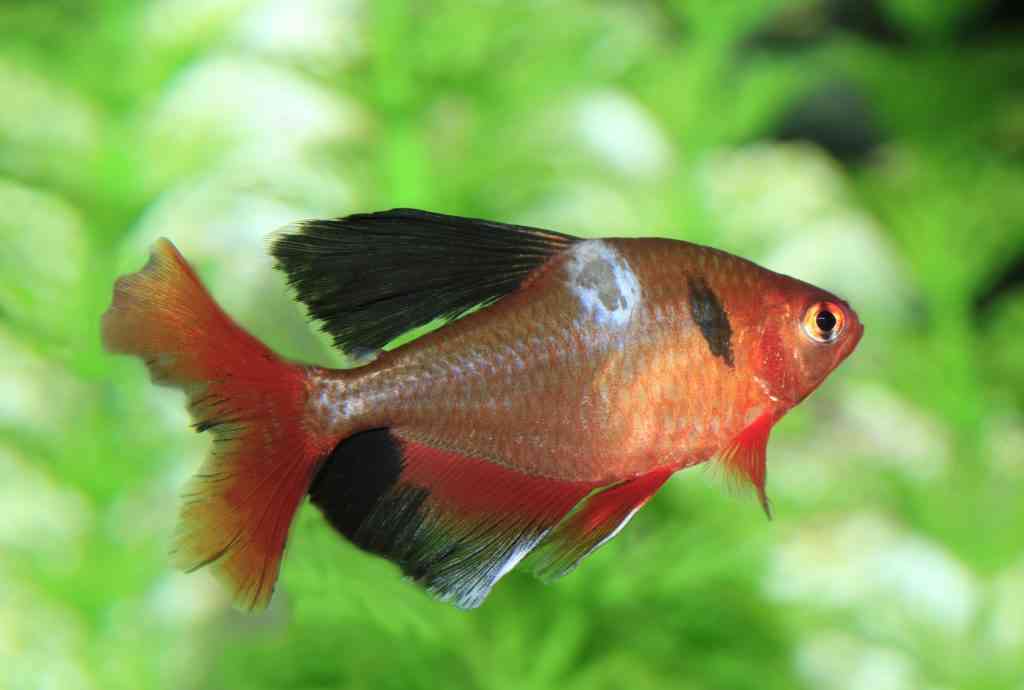Cichlid husbandry as a hobbyist and as a professional
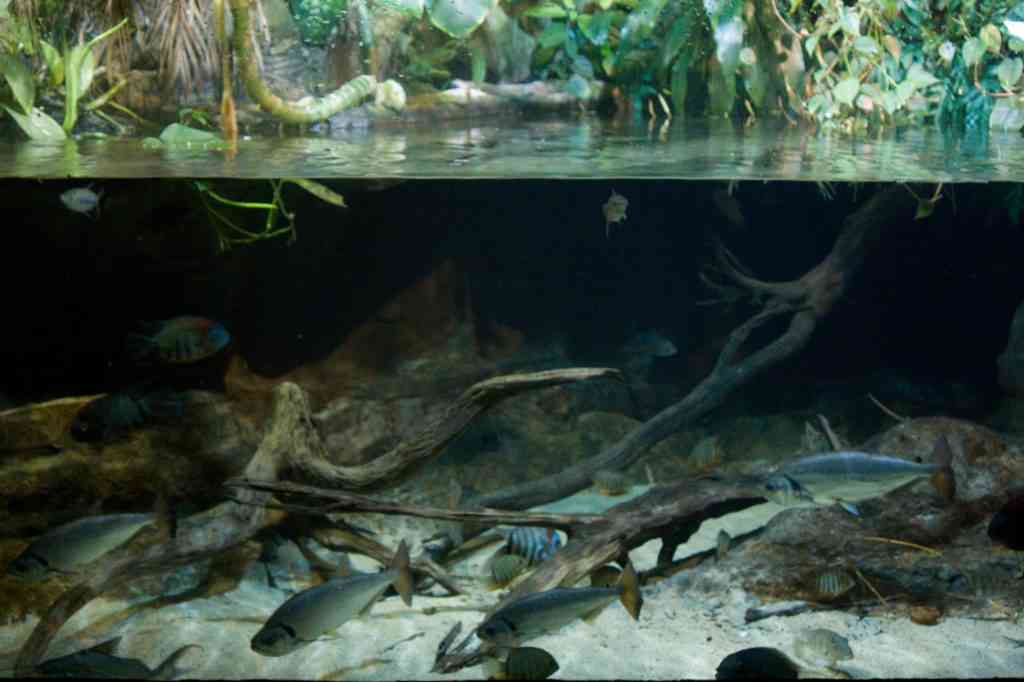
Imagine aquariums so large you can’t remember the volume without referring to a file. Imagine that one of your professional jobs is to accurately count the cichlids and other fish you care for on an annual basis. Imagine ordering frozen flat packs of bloodworms and brine shrimp, buckets of flakes and gel diets in such quantity that you have an account with a wholesaler. Imagine being able to inspire members of the public with a variety of freshwater biotopes, endangered cichlids from Lake Victoria and Madagascar, and communities of Amazonian cichlids. Imagine that you are a public aquarium professional—an aquarist who is paid for their passion.

For many lifelong hobbyists, this is a dream. For some, it becomes a reality. I am one of the lucky hobbyists who developed a fascination for aquariums at a young age and followed the passion through to a 15 year career at the Vancouver Aquarium, a public aquarium in British Columbia, Canada. The Vancouver Aquarium is a member of the Association of Zoos and Aquariums (“AZA”), an independent accreditation organization that ensures member facilities meet the highest standards for animal care and welfare.
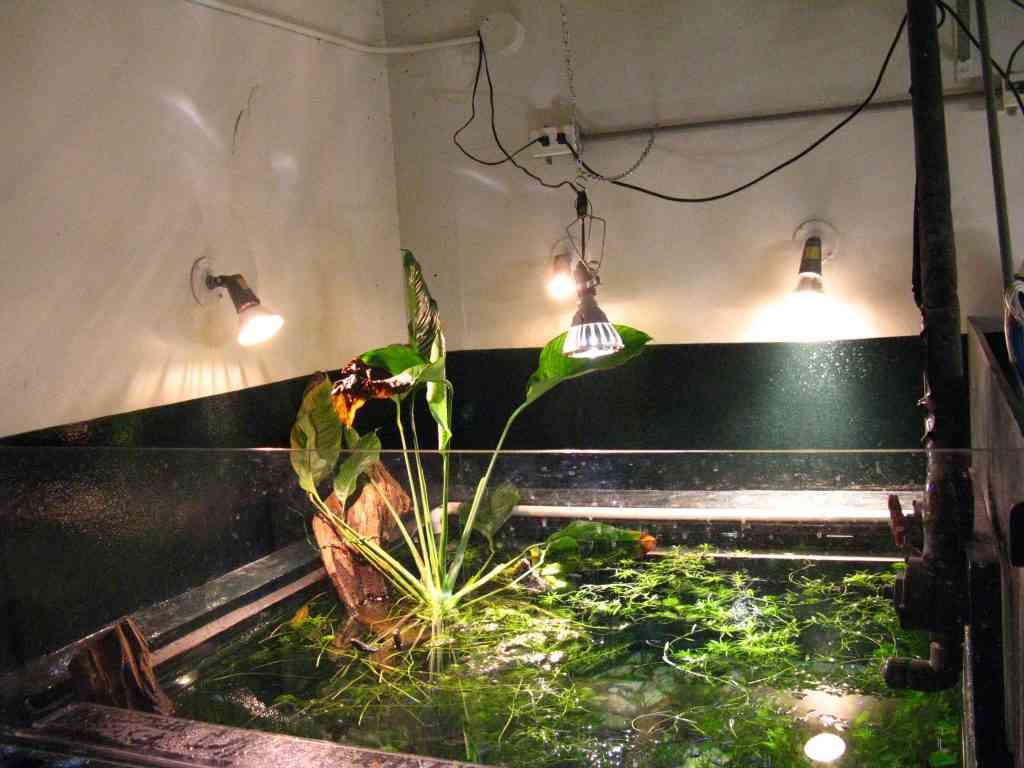
Although I’ve painted a picture of the opportunity and excitement of such a career, not everything when it comes to cichlid husbandry is simply better because it happens at a larger scale. My hope is to share with my fellow cichlid enthusiasts the nuances, pros, cons and differences between keeping cichlids in your home aquariums and keeping them at a professional scale in a public aquarium setting. In my life today, I have made the transition to an unrelated career, and have once again found my way back to the enjoyment of cichlids as a hobbyist. Throughout the process of becoming a hobbyist again, a number of reflections have emerged that I offer you here.
Size

Substantially-sized aquarium habitats can have incredible advantages, such as the ability to house larger cichlid species and observe more natural behaviour by keeping cichlids in groups, but they can also pose some specific challenges. In many institutions, water systems are shared: all of the freshwater aquariums connect to one large filtration system. While this can help to maintain a high standard of water quality—often, small quantities of new water are constantly added, eliminating nitrate accumulation—it also eliminates the ability to provide specific temperatures or other water parameters for each species. Cichlids who require very acidic water like species from the Rio Negro or very alkaline, mineral rich water like species from Lake Tanganyika, may not thrive in this type of shared water system. In Vancouver, we are fortunate to have very soft, low-conductivity water coming in just shy of a neutral pH, so many Amazonian species did well, but we had to build a smaller, separate hard water system to maintain Rift lake species.
Disease management in shared water systems must be handled differently than in a series of isolated home aquariums. All AZA-accredited public aquariums have quarantine procedures and systems in place. Even so, with shared water can come shared pathogens. For example, an ich outbreak can spread throughout many connected aquariums, and require a system-wide treatment. Due to the high water volume and other species in the system—such as freshwater stingrays that do not tolerate copper—treatments cannot always be the same that you might use in a home aquarium.
Mycobacteriosis, caused by bacteria in the Mycobacterium genus, is another important disease that is often present in aquarium systems. This zoonotic bacteria is a health concern for aquarists in contact with the water and is considered almost ubiquitous and next to impossible to keep out from a shared freshwater aquarium system. Older specimens that could be 10 + years of age may appear outwardly healthy but may shed some amount of this bacteria constantly as they have a chronic infection that their immune system is somewhat keeping in check. Culling the most affected specimens does not do much for eliminating this disease, and it is not uncommon for certain specimens or even entire species, including some Victorian and Malagasy cichlids, to be uniquely susceptible and develop a sort of wasting and failure to grow due to their ongoing battle with Mycobacteriosis. This is also a concern when it comes to conservation and re-introduction efforts.
It is not only pathogens that afflict cichlids in public aquariums. Diseases of nutritional or mechanical origin also occur. I will expand further on dietary factors later, but ensuring the ideal diet for each species is generally not realistic in a public aquarium setting. While experienced hobbyists and professional aquarists alike have a keen eye and a “fish sense” that imparts an instinctual understanding when something is the least bit off with the fish under your care, there are issues that come up in a public aquarium that few hobbyists ever encounter—for example, supersaturation.
In large water systems, system pumps are often located remotely from the display area to minimize mechanical noise for visitors. The first time I experienced a mysterious mechanical issue in one of my systems, I was puzzled at the rapid appearance of exophthalmia (bulging eyes) in a number of Malawi cichlids. These fish had been very healthy with no significant disease issues for years by that point, and the onset overnight seemed too fast for it to be a pathogen. It took some sleuthing and quick education to discover, with the help of a gas saturometer, that there was something wrong in the mechanical system causing the pump to over-saturate the aquarium water with atmospheric gases. The fish were suffering from supersaturation, or gas bubble disease, which can occur through many different mechanisms. We examined the system to determine what had changed to cause this to happen so quickly. The system pump basket had become clogged with debris and the gasket that prevents air from entering the pump system was therefore compromised. A small influx of air on the suction side of the pump then became mechanically pressurized and supersaturated the water with the components of air, including nitrogen. Although some of the cichlids did not survive this event, figuring it out quickly corrected the issue and the majority pulled through unscathed. This type of experience is fortunately, hard to come by in the home aquarium setting.
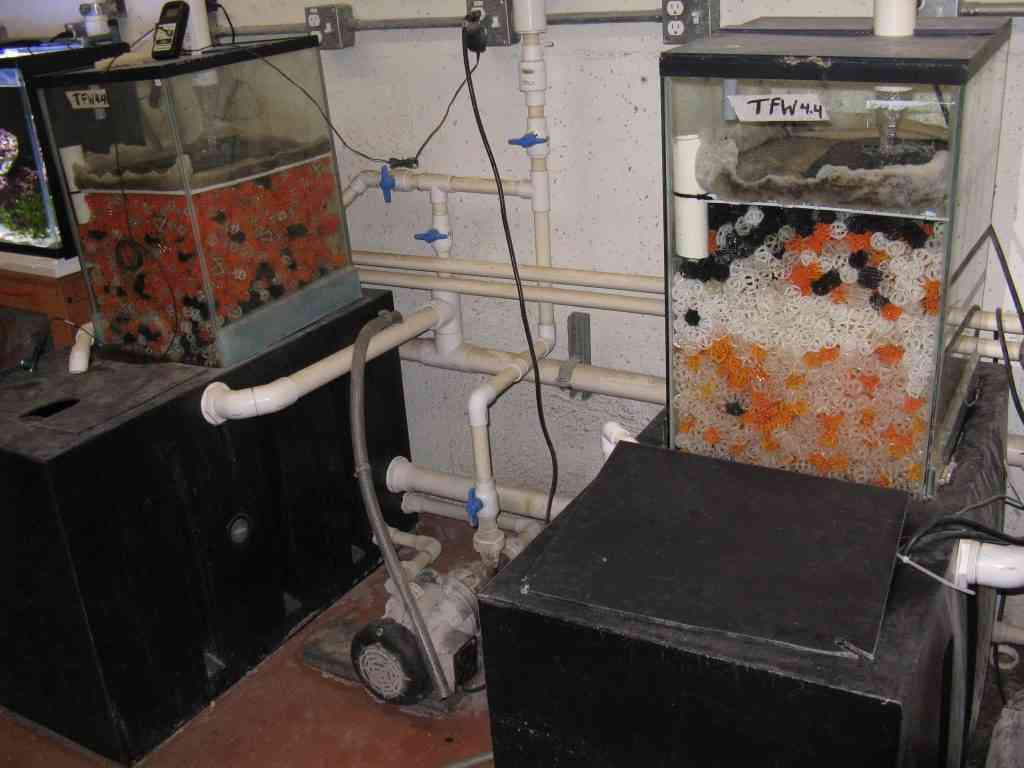
There are significant advantages of the public aquarium setting when it comes to managing fish health. Professional aquarists have access to qualified veterinary care and to professional-grade water quality analysis. As a home hobbyist, we generally cannot seek accurate diagnosis of a fish health issue by microscopy or submission of mortalities to an animal health lab. We must rely on our own experiences and observations to determine a possible diagnosis and treatment. It has become even harder for aquarium hobbyists in Canada since 2019, when Health Canada banned the sale of most aquarium fish medications. This leaves hobbyists precious few options for treating even diseases that are easily visually or behaviourally diagnosed. This is a major problem for Canadian hobbyists when it comes to ensuring the health and welfare of their specimens.
In a public aquarium setting, weekly aquarist department meetings usually include a member of the animal health team, either the veterinarian or a veterinary technologist who can help diagnose and monitor ongoing cases and prescribe, deliver and assist in administering treatments to the fish. This is certainly a service I miss, having made the transition back to hobbyist. These meetings may also include regular water quality reports for ongoing proactive monitoring which is also very helpful in managing fish health. Fortunately, many good test kits are available to home hobbyists these days, and we can usually understand the water quality in our home aquariums to the degree necessary for good management.
Aquascaping in public aquariums frequently uses materials atypical for home hobbyists. Concrete, rebar, chicken wire, paints, epoxies, large rocks, pool-grade substrates, and artificial plants can all introduce substances into the water system that are less than ideal for many cichlid species. This may contribute to the development of head and lateral line erosion (HLLE) or other health issues in more sensitive species. Resin products we can use in home aquariums to adsorb copper and heavy metals are not realistic in such a large system with a constant influx of new water, although many large water systems do employ carbon filtration.
Finally, when you have large aquariums all around you- of course, there are drains nearly everywhere! No more worrying about where to empty a siphon, or ruining your hardwood floor and soaking your downstairs neighbours. Although, an ongoing joke among us aquarists was that somehow the drains always ended up at the highest point of the floor. Squeegee skills are a must. A professional aquarist who transitions back to being a home hobbyist requires a bit of a shift in thought process about the importance of spills, as I can personally attest. In every home you live in, you must determine how you will fill your aquariums and how you will safely drain your water, which sometimes leads to plumbing modifications or other creative makeshift systems. Many serious hobbyists do develop specific fish rooms with an easy filling system and drains, but of course others cannot and must be cautious when performing regular water changes.
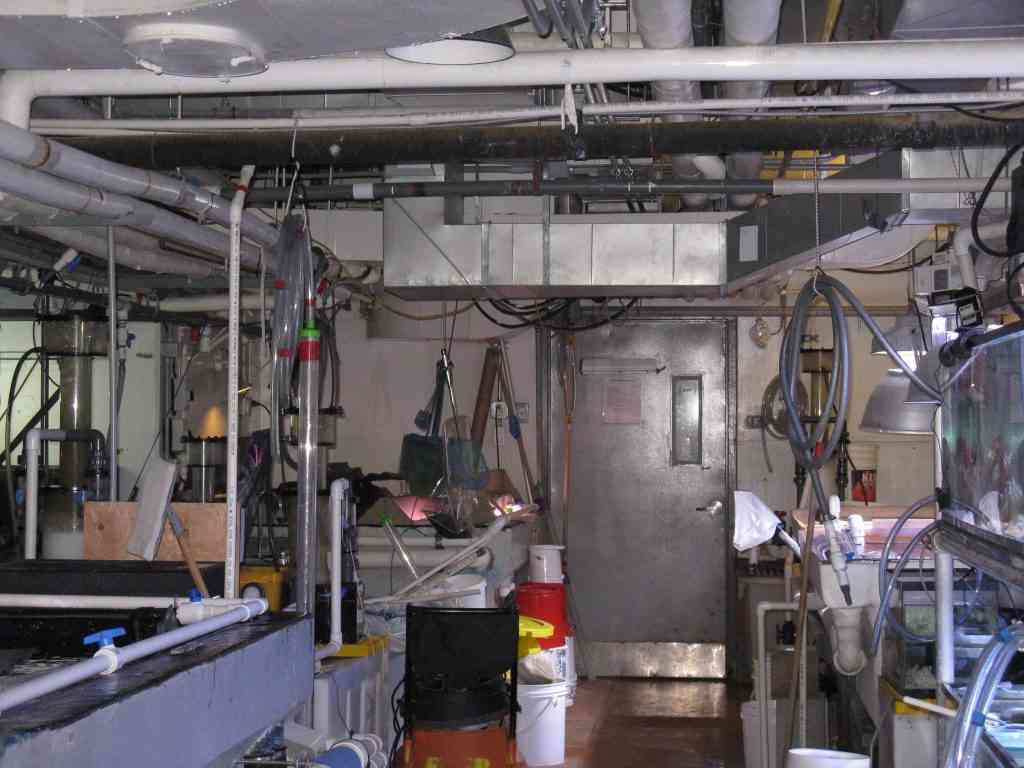
Diet
Plenty of space, along with professional grade dietary supplements, gel diets, and other healthy foods are readily available to professional aquarists. With this can come rapidly growing, healthy cichlids who spawn regularly on exhibit. Cichlids’ incredible parental care stands out among all fish seen in public aquariums and was a wonderful way to connect visitors to the fish, to help them see beyond just the appearance and to appreciate their intelligence and their devotion to their young.
Most institutions hatch Artemia nauplii at a practically industrial scale to feed to their entire fish and invertebrate collection, so it is very easy to provide food for cichlid offspring. Most of the cichlids do an admirable job of protecting their growing fry from other tank inhabitants, and surviving young join the larger cichlid population over time. However, some cichlids struggle with the environment more than anticipated.
Large tanks of course, allow aquarists to display larger species. Most often, these are displayed in an approximate biotope or community type of setting for visitor interest. An example of a cichlid species where dietary needs are challenging to meet is with the larger Crenicichla species. We kept the pike cichlid Crenicichla lenticulata in a large mixed habitat with tiger stingrays (Potamotrygon tigrina), Payara (Hydrolycus scomberoides), and rottkeil severums (Heros cf. efasciatus), among other attractive Amazonian fishes.
This species composition necessitated offering a variety of meaty foods such as lake smelt, trout, shrimp, clams, and gel diets in sufficient quantity to meet the needs of the hungry freshwater stingrays and shy, flighty Hydrolycus. Despite efforts including target feeding to ensure the correct quantity of food to each species, and offering crickets and healthier options to the Crenicichla, they were greedy feeders and quickly became obese and unhealthy, displaying unattractive HLLE and poor body shape related to an overaccumulation of unhealthy fatty tissues. Meanwhile, the other fish had excellent body weight and health, leading to spawning of the Heros, live birth of the tiger stingrays, and large healthy Hydrolycus (rarely seen in public aquariums). Crenicichla are aggressive feeders and in a mixed predator habitat it simply was not possible to provide them the specific dietary care they required. We unfortunately had to decide to no longer maintain large Crenicichla.
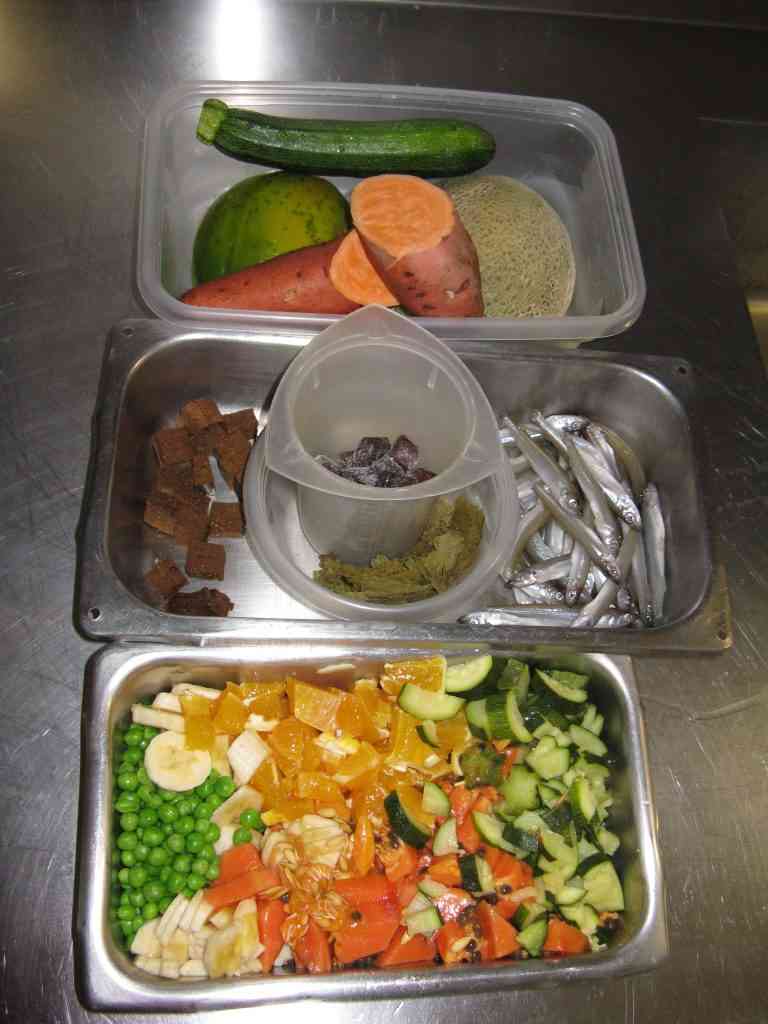
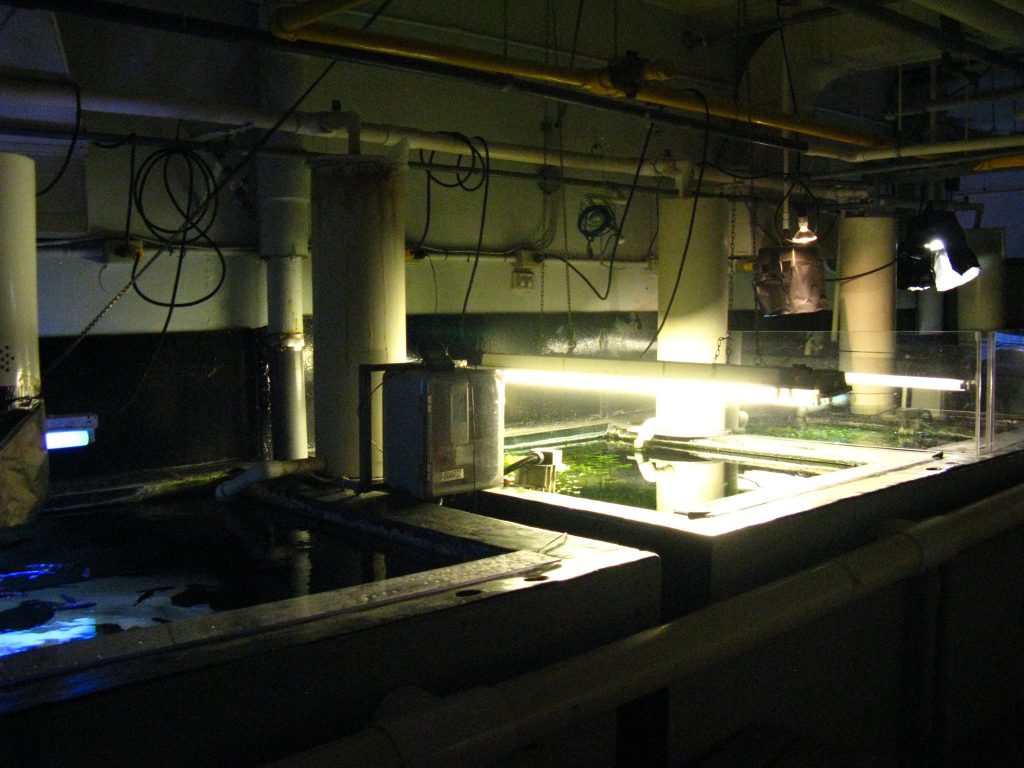
Other Environmental Factors
Lighting and sound management can be contentious issues within public aquariums. These environmental factors can be stressors for the fish population and impact the health of the cichlids over a longer term. There is often some degree of mixed-use of the visiting space. It’s common to have evening events such as fundraisers, or for public aquariums to generate revenue by renting the facility out to different groups looking for a unique event or party venue.
Many public aquariums are open every day of the year, with visitors entering by 9 a.m. or earlier, and end of business seasonally varying between 6-8 p.m. The presence of the public dictates the hours that aquarium lighting must be on, and the aquarists must see the exhibits before opening to ensure everything is clean and ready for the day ahead. Visitors want to be able to see the fish, so dim lighting is not often an acceptable option. Adding to this long day of the general public visiting can often be an evening event, running to midnight or later.
Now, you have a lighting situation that can at best be described as unnatural for many cichlids and other fish. This can lead to chronic stress in the fish population, which is difficult to quantify and demonstrate for senior management who are also concerned with the operating budget for the aquarium and its revenue sources. It may seem obvious, but fish don’t have eyelids. As an aquarist who empathizes with her charges, it always struck me as unfair to subject the fish to these extended photoperiods, but there were no specific guidelines in place for this. Excess lighting can also contribute to difficult to clean algae accumulation and impact the appearance of the display. Some aquariums have installed modern lighting systems that mimic a drawn-out evening sunset experience to alleviate this stressor to the extent possible.
Other stressors that can result from the environment of a public aquarium include loud sounds. Events or parties often play loud music which can penetrate the habitats and startle the fish. Construction noises are common when upgrading facilities, and these vibrations can also stress the fish or even cause some to jump from their exhibits. The presence of visitors knocking on aquarium glass throughout the day can be a source of ongoing stress for the cichlids, many of which have a propensity to be nervous. Stressed cichlid species might hide and be poor display specimens, although the addition of dither fish to the display can often help to draw them out.
In a home aquarium, the hobbyist typically has the absolute control over photoperiod and sound intrusion. This is a significant advantage that hobbyists have over the professional when it comes to providing an environment for cichlids to thrive in. Not only can we control the timing, intensity, color temperature and placement of the lights, we can also control the startle response some cichlids may have when approached too suddenly in their aquarium. We can choose to sit gently near the aquarium to observe them and move slowly when doing maintenance work. This generally affords a more peaceful environment for cichlids to court, spawn and rear their young than they could experience on display in a public aquarium.
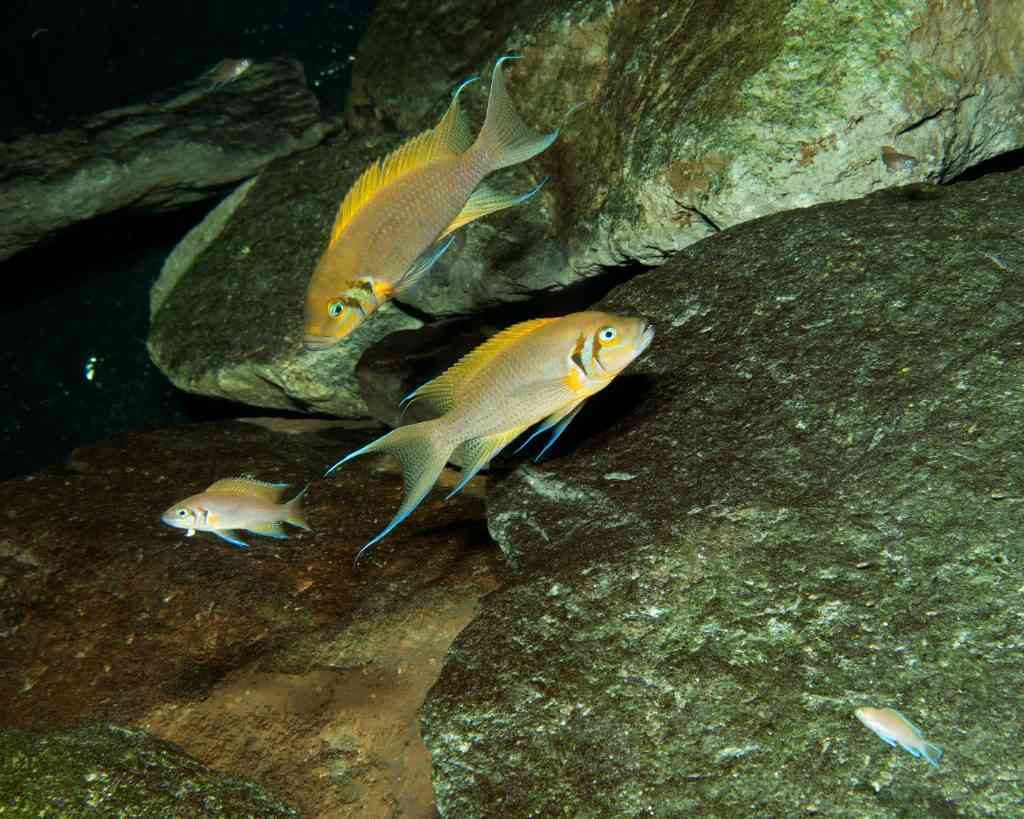
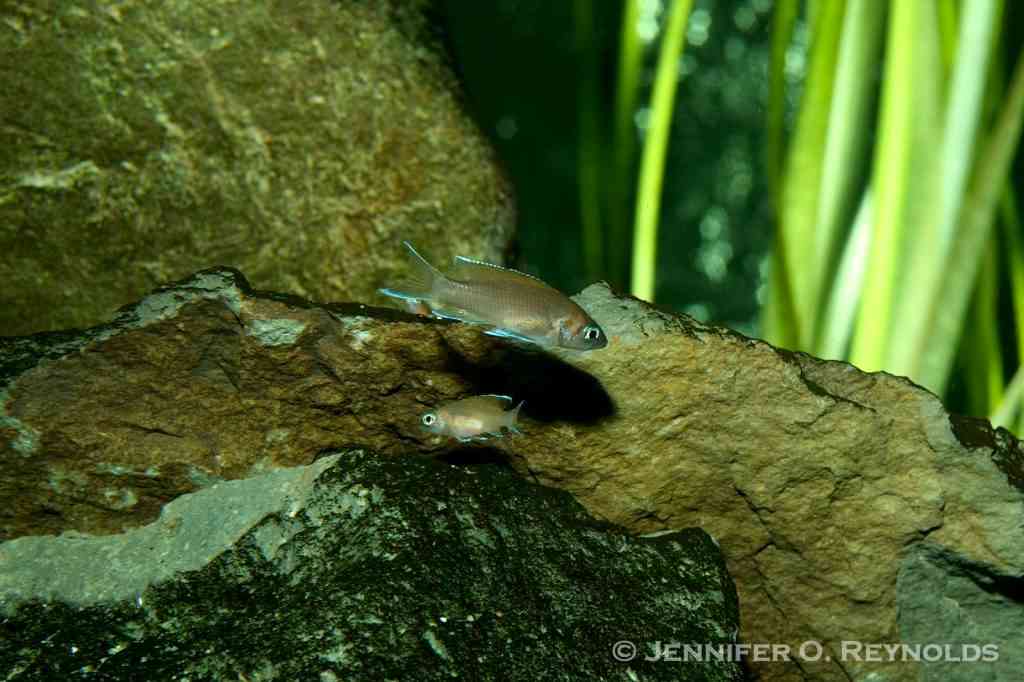
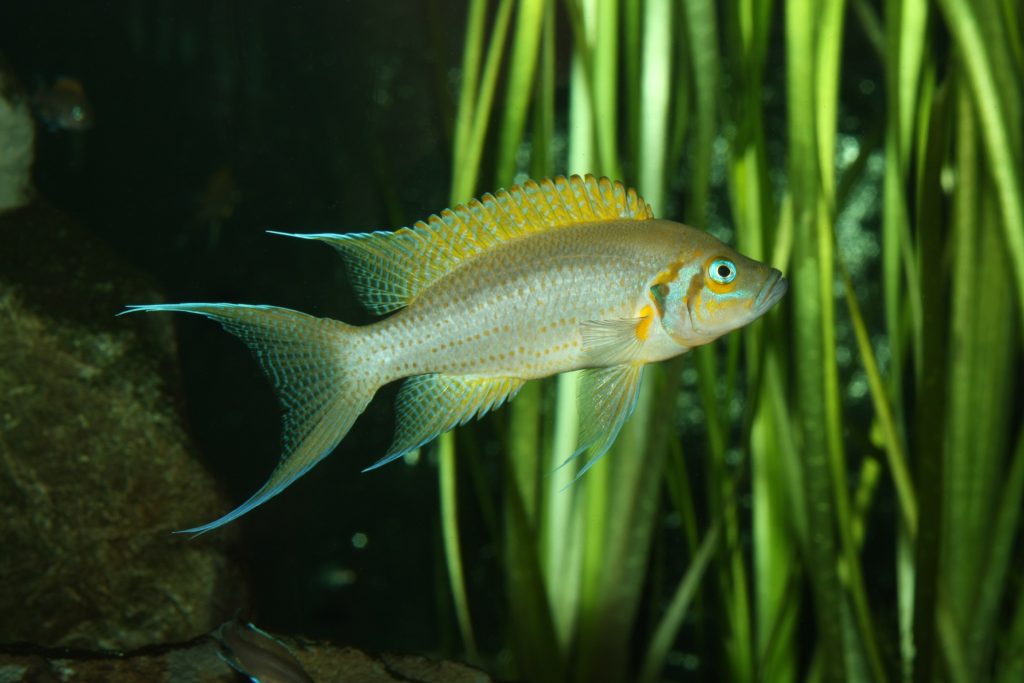
Spawning, Behavior, and Observation
The most incredible thing about being a professional aquarist working with cichlids is observing natural behaviours when they happen. Given enough space, cichlids can often claim a properly-sized territory in a mixed community display. With their reputation for exceptional parental care, and their general purposeful behaviour, cichlids often treat professional aquarists to many fascinating interactions.
Despite being with the cichlids nearly 40 hours per week, we simply do not get to see everything they do. Not only are we present during just typical working hours (8-4) so we miss much of what may happen in the exhibits in the evening, early morning or overnight, we are also chronically rushed due to the nature of the job.

A career as a professional aquarist is an incredible privilege, and it is also a tough job both mentally and physically. Unfortunately, professional aquarists must often hurry around without having much time to observe and appreciate the fish we care for. The day goes unbelievably quickly with so many responsibilities. On a daily basis, we must ensure all the tanks are cleaned of debris and algae to the high standards of an AZA-accredited institution and all disease or mortality issues are dealt with. Most days, a lighting, mechanical or other issue will crop up that must be promptly attended to. We must also prepare and offer a regime of healthy foods and supplements, treat and care for all newly arrived or quarantine specimens, submit water quality samples and order supplies. Record-keeping is critical to an accredited institution so daily data must be kept and entered. Department meetings must be attended and work areas kept clean and orderly. Throughout this, we take the time to patiently answer questions from members of the public as we move through the display galleries.
The duties of an aquarist can seem endless at times. We must be a jack of all trades. We need to understand and manage fish behaviour among a huge number of species, we must understand water quality and basic fish health in order to effectively collaborate with other departments, be able to troubleshoot mechanical and water chemistry issues, and understand complex life support systems. A professional aquarist can accidentally forget to turn on or off one valve in the middle of their work day, go home, and end up killing an entire tank or system of fish overnight. So the stakes can be high and there is an element of stress and worry among the fun and fascination.
Many times at the Aquarium, I knew the fish I cared for were displaying amazing behaviours, like Whitespot Eartheaters (Satanoperca leucosticta) letting fry out of their mouths to feed along the sand and then calling them back into their mouths. I desperately wanted to stay and just watch this magic unfold, but I had work to do and had to move on. As I transitioned back to being a home hobbyist, I have found a great deal of enjoyment in the carefree time I have to watch my cichlids and their interactions. I experience more relaxation from cichlid-keeping in this setting than in the fast-paced professional setting. Evenings spent watching the antics of my perpetually spawning Julidochromis dickfeldi, or the constant sand-sifting and territorial displays of my Xenotilapia flavipinnis are restorative in a way that can be lost in the professional setting.
Another curious difference is that professional aquarists mostly view exhibits from the top, because we are working behind the scenes where access hallways and closets obscure the life support systems from visitors. A morning tank check by walking through the public side of the galleries and observing everything is an important routine for a professional aquarist, and it dictates the priorities for the day. But there can be a different feeling when most hours of the day you see your fish from the top—sort of a koi pond view—versus from the front. Throngs of visitors often obscure the gallery view unlike in a home aquarium where seeing the fish side-on is the majority of your experience. But that morning tank check and end of the day tank check can yield both wonderful and shocking discoveries we do not often see in our home aquariums, when it comes to behaviour and reproduction.
Some of the most fascinating behaviours I observed were inter-species behaviours. Because we had an Amazon gallery, we had a large proportion of Amazonian cichlids on display. We often displayed wild Festivums (Mesonauata insignis) and Angelfish (Pterophyllum scalare) together. These species had interesting interactions. On many occasions, I witnessed angelfish acting as cleaners for the Festivums. An individual Festivum would slowly re-orient in the water column so that its mouth faced the surface, exposing its underside and holding very still. An angelfish would then approach and proceed to gently pick at the Festivum’s abdomen several times, nibbling something not visible to my eyes, as the Festivum held its position, seemingly glad for the service.
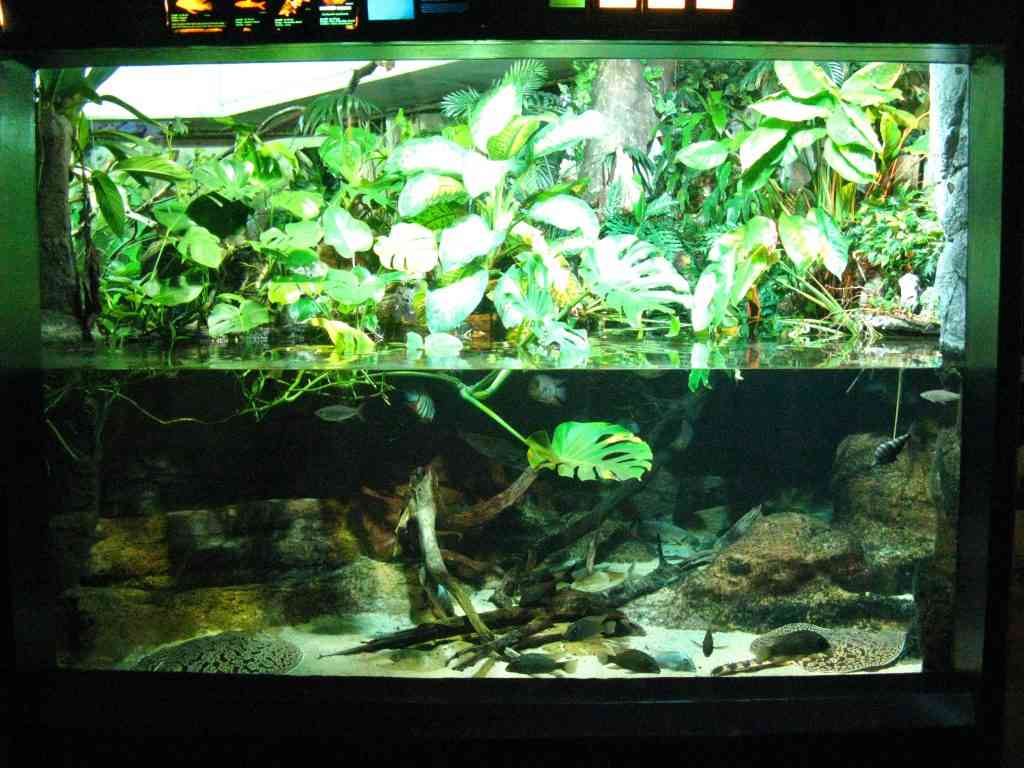
Another time, in a large flooded forest display, the Festivums had spawned and were carefully guarding a shoal of mobile fry just under the surface. I watched as one of the angelfish, who had never spawned, boldly approached the Festivums and snatched a fry in its mouth. I assumed that the angelfish were predating on the Festivum fry. What absolutely surprised me is that instead, I was witnessing a purposeful fry-napping. The angelfish returned to the other side of the tank, spat the Festivum fry out near its chosen partner, and they proceeded to guard the Festivum fry as if it were their own.
Other cichlid behaviours can be seen by hobbyists and professionals alike, although not as many hobbyists will experience the impressive scene of a pair of Oscars (Astronotus ocellatus) owning half of a large display with their huge swarm of fry. A colony of Daffodil cichlids (Neolamprologus pulcher) engaging in their cooperative breeding strategies is a constant delight and excellent visitor attraction. “Multis” (Neolamprologus multifaciatus) easily fill any size shell bed provided to them over a period of a year or two, becoming a self-maintaining colony in no time. Malawi cichlids of course are notorious for recruiting within their aquariums, and home hobbyists too will often find a few fry that emerge from the rocks. This was always enjoyable as a professional, and to then find that the Tanganyikan cuckoo catfish, (Synodontis multipunctata) we had taken the poetic license to house with them had also spawned by taking advantage of these maternal mouthbrooders was quite a thrill. Smaller tanks with different dwarf cichlid species would also become wonderful little ecosystems. A leaf litter exhibit with Checkerboard cichlids (Dicrossus filamentosus) provided space for adults to spawn and young to grow and find their own leafy territory, and harem spawning Apistogramma species such as A. agassizi found adequate room to fulfill their life cycle as well. Communicating all of these happenings to interested visitors, members, volunteers and aquarium office staff was a personal point of enjoyment for me, because I wanted others to see the cichlids with as much enthusiasm as I did.

While it’s every aquarists’ reward to have their fish spawning, it can be another challenging aspect to manage in a public aquarium setting. AZA-accredited institutions must adhere to acquisition and disposition guidelines set by the association.
Therefore, re-homing young cichlids who start to overpopulate is actually quite difficult, particularly across country borders for Canadian institutions. The regulations are such that you cannot simply bring them down to your local fish store or give them to a hobbyist who has room: you have to send them to another AZA-accredited facility, to assure standards of welfare are met. This can pose a problem with more common species. When it isn’t easy to find a home for some of them, excess fish can end up languishing in tanks behind the scenes for some time while an appropriate institutional home is located. So it is sometimes necessary to separate breeding pairs, or introduce a predator (think Altolamprologus for those Neolamprologus colonies) to ensure that we do not become overburdened by young cichlids that can’t find an institutional home right away.
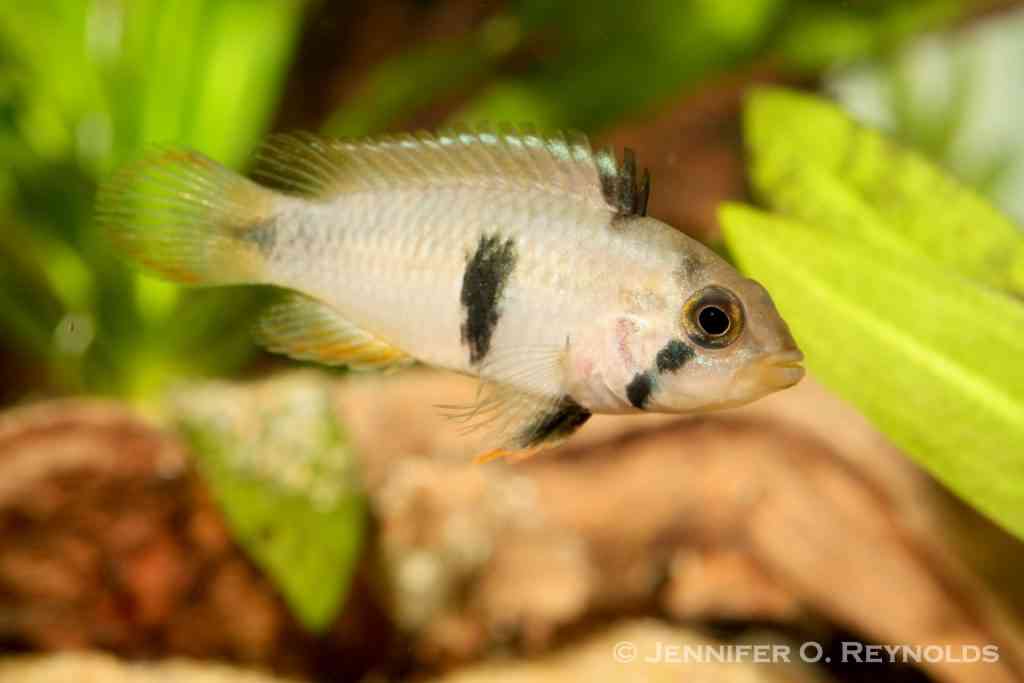
In conclusion, I hope that I have presented you with some unique insights into how keeping cichlids can be a very different experience as a cichlid hobbyist and as a professional aquarist. While my years working as a professional aquarist are an experience I wouldn’t trade for anything, I also believe that many cichlid hobbyists do just as well or better when it comes to providing for their fish. Home fish room tours I have been privileged to be invited to have impressed me frequently: the body condition and health of many hobbyists’ cichlids often exceed that of what I saw in public aquariums, perhaps because of all the differences I elucidated in this article. Home cichlid hobbyists can and do provide excellent care, by satisfying specific dietary, water quality, environmental and behavioural needs of the cichlids they care for. The dedication and work of hobbyists has made an incredible contribution to the research and knowledge base we have today on cichlids and I am honoured to be counted among you once again.
I’d like to extend my gratitude to Gary Elson, Pete Liptrot and Oliver Lucanus for their support.

